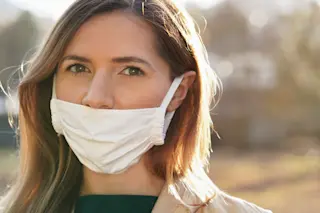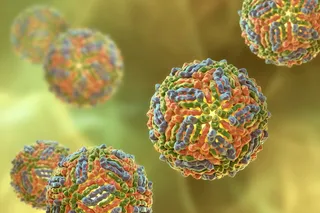With the COVID-19 pandemic showing no signs of stopping, there’s a lot of responsibility on people to wear face masks while out in public. But even if you do wear a mask, you might not be wearing it properly.
According to CDC guidelines, face masks are meant to cover both the nose and the mouth and fit securely under the chin. While most people who mask-up do wear them correctly, that’s not always the case. Some people prefer to wear their masks pulled down so it only covers their mouth, leaving their nose exposed. But this can defeat a key purpose of wearing a mask. Research from several scientists have demonstrated that the nose is highly vulnerable to COVID-19 infection.
Wearing a mask helps slow the spread of COVID-19 by preventing the transmission of droplets and aerosols that are produced when a person breathes, talks, coughs or sneezes. The CDC says this is a primary way the virus spreads.
Nasal Negligence
In April, an international team of researchers determined that the nose is a key entry point for SARS-CoV-2, the virus that causes COVID-19. Their work, which was published in the journal Nature Medicine, explained that nasal cells in particular contain high levels of the proteins that SARS-CoV-2 attaches to in order to enter the body. The proteins are called ACE2 and TMPRSS2.
To track down the protein pathways for the virus, the researchers examined tissue samples from donors that included lung, eye, nasal, intestinal, heart, kidney and liver cells. Waradon Sungnak, an immunologist at the Wellcome Sanger Institute and the lead author of the study, explained that the researchers examined the nose cells somewhat as an afterthought, and did not anticipate them to be so important.
Because the nose is a main pathway for the virus, Sungnak says it's a possible explanation for why COVID-19 spread so efficiently early in the pandemic.
“The expression of these viral entry factors are high in the nose,” Sungnak says. “So, it’s a very easy place for the virus to get in and then once it gets in, a place to replicate. So if there’s any way for you to block that from happening, I think it’s worth it. So, for me, it doesn’t really make sense if you’re putting on a mask, to not be putting a barrier on the nose.”
COVID-19 Gateway
Another study, published in Cell in July, pointed to the importance of protecting the nose. A team tracked how the coronavirus entered the lungs and where the initial site of infection was.
The researchers mapped surface receptors in the airways to determine which areas contained the most ACE2 proteins. They determined that the highest concentrations of these proteins are located in are in the nose, instead of the deep lungs as they had anticipated. After exposing tissue samples to SARS-CoV-2, the team determined that the nose was the most fertile infection point of the entire respiratory system.
Read next: Why It Feels Like You Can't Breathe Inside Your Face Mask — and What to Do About It
Study author Richard Boucher, a pulmonary researcher at the University of North Carolina in Chapel Hill, says that the findings are consistent with the way the nose is used by the body as a filtration device, to both draw in and trap viruses. While in the nose, the viruses can be “micro-aspirated,” or breathed into the lungs through tiny droplets of body fluids. Once in the lungs, the virus replicates itself using the cells there.
Boucher says micro-aspiration is more common among older people and those with medical conditions. As a result, these populations are more likely to have viruses like COVID-19 impact their lower respiratory system, which includes airways and lungs. Younger or healthier people, in contrast, are more likely to have the virus remain in their nasal passages, which means they'll experience milder symptoms such as runny noses or sneezing.
Boucher says it’s clear that protecting the nose is extremely important to protecting the lungs and respiratory tract from COVID-19. Based on the findings of his study, wearing a mask underneath the nose is completely ineffective in protecting someone’s respiratory system.
“It may in fact be bad because it gives you a false sense of protection,” Boucher says. “You may go into circumstances that are not so wise, but you think you’re protected so you’ll take the risk. So, in one sense it’s the worst of all worlds. It’s ineffective, but it may deceive you into thinking you’re protected.”














